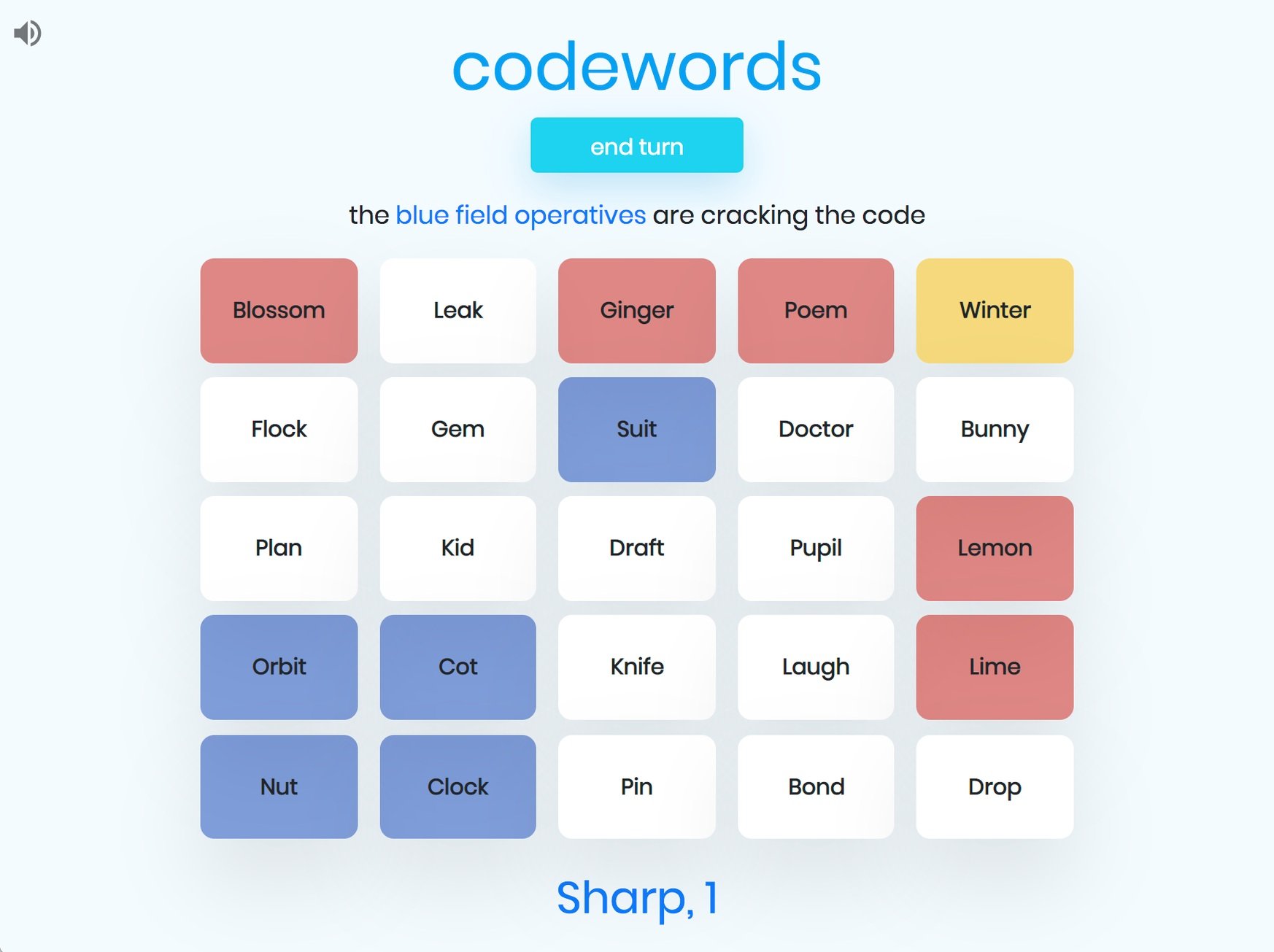Solving Codewords: Tips, Tricks, and Tech-Savvy Solutions
Comparison of the different Codewords games, both with millions of players
Remote Jobs > Online Businesses > Solving Codewords: Tips, Tricks, and Tech-Savvy Solutions
Unlocking the Secrets: Become a Codeword-Solving Expert
Solving Codewords is more than a brain-teasing challenge—it’s a words puzzle that sharpens your logic, tests your ability to spot patterns like double letters, and hones your linguistic knowledge. Unlike Killer Sudoku or Samurai Sudoku, which focus on numbers and grid logic, Codewords engages your language skills by deciphering starting letters and unlocking hidden words.
In this article, we’ll cover key strategy tips for solving Codewords, from beginner techniques to advanced methods, helping you tackle each puzzle with ease.
Contents:
Introduction to Codewords: What Are They?
How Codewords Work: The Basics
Key Strategy Tips for Solving Codewords
Common Patterns and Tips for Decoding
Advanced Techniques for Challenging Codewords
Leveraging Programming Skills to Solve Codewords
Tools and Resources for Codeword Solvers
Tips on Solving Codewords Game Puzzles
Solving Codewords Game Using Programming Skills
The Best Codeword Puzzles to Try
Common Mistakes to Avoid When Solving Codewords
FAQs About Codewords
Conclusion: Mastering the Art of Codeword Solving
By the end, you’ll not only have the tools to tackle even the most challenging puzzles but also a few tricks up your sleeve to make solving Codewords faster and more enjoyable.
Introduction to Codewords: What Are They?
The traditional Codewords puzzle consists of a grid filled with numbers representing letters of the alphabet, which you decode to reveal hidden words. These puzzles are often structured with grids ranging from 13x13 squares, and the goal is to use logical deduction to determine which number corresponds to which letter.
CodewordsGame.com offers an additional twist by allowing multiple players to join in the game, making it a collaborative and competitive experience, and using words instead of numbers in a 4x4 or 5x5 grid instead. This variation extends the traditional solo puzzle-solving by integrating social interaction and word categories, which can enhance the enjoyment and challenge of the game.
Both versions of the game emphasize strategic thinking and linguistic skills, but the version on CodewordsGame.com adds a layer of teamwork and interactive play, distinguishing it from the more traditional, solitary Codewords puzzles. However, if you’re looking specifically for how to solve the newer version, skip to the “Tips on Solving Codewords Game Puzzles” section.
Traditionally, Codewords have been a type of word puzzle where each letter of the alphabet is replaced by a number, typically from 1 to 26. The puzzle consists of a grid filled with numbers, and the challenge is to figure out which number corresponds to each letter to reveal the hidden words. Unlike crosswords, Codewords won't provide clues; instead, solvers rely on logic, pattern recognition, and their knowledge of the English language to decode the puzzle.
Codewords are popular among puzzle enthusiasts because they offer a unique blend of linguistic challenge and logical deduction. The absence of clues makes each puzzle a fresh challenge, requiring solvers to apply critical thinking and methodical problem-solving techniques. The satisfaction of uncovering the complete set of words from what initially appears as a random assortment of numbers is a big draw for those who enjoy brain-teasers.
Additionally, Codewords are a great way to improve vocabulary and sharpen mental agility, making them both entertaining and intellectually rewarding.
The History of Codewords
Origin: Codewords puzzles first appeared in print in the late 1970s. They were introduced as a variation of the traditional crossword puzzle, offering a fresh challenge for puzzle enthusiasts.
Popularity: Codewords became popular in the UK during the 1980s, especially as part of daily newspapers. They quickly gained a following among puzzle lovers who enjoyed the mix of logic and word knowledge required to solve them.
Puzzle Structure: Typically, a standard Codewords puzzle grid consists of 13x13 squares, although smaller and larger grids are also common. Each puzzle contains at least two or three pre-filled letters to help solvers get started.
Global Reach: While initially popular in the UK, Codewords have since spread internationally and can now be found in many puzzle books and online platforms worldwide.
Newest version of Codewords, using actual word categories in a 5x5 grid.
How Codewords Work: The Basic Rules
The Puzzle Structure
A Codewords puzzle consists of a grid, usually 13x13 squares, filled with numbers ranging from 1 to 26. Each number corresponds to a specific letter in the alphabet. The goal is to decipher the correct letter for each number, ultimately revealing the hidden words within the grid.
Number-to-Letter Correspondence
Each unique number in the puzzle grid represents a different letter of the alphabet. For example, if the number "3" corresponds to the letter "E," then every instance of "3" in the puzzle will be an "E." The challenge lies in determining which numbers correspond to which letters based solely on logic and deduction, as no direct clues are provided.
Getting Started with a Puzzle
Pre-Filled Letters: Most Codewords puzzles start you off with a few pre-filled letters that correspond to their respective numbers. These serve as your entry point, helping you make initial guesses and identify potential words.
Frequency Analysis: A common starting strategy is to use letter frequency analysis. In English, certain letters like "E," "T," "A," and "O" appear more frequently than others. By identifying the most common numbers in the grid, you can make educated guesses about which letters they might represent.
Word Patterns and Common Combinations: Look for common letter combinations or patterns in the grid. For instance, if you see a sequence that could be "THE," and you already know "T" and "E," it can help you identify "H."
Solving the Puzzle
As you start filling in more letters, you'll begin to recognize words, which in turn helps you solve the remaining letters. Each correct guess unlocks more of the puzzle, leading to a snowball effect where the solution becomes clearer with each step.
Finishing Touches
The puzzle is complete when every number in the grid is correctly replaced with its corresponding letter, revealing a set of meaningful words. Double-check your work to ensure no numbers or letters are left unmatched.
By understanding and applying these fundamental rules, you can effectively approach and solve any Codewords puzzle, turning what initially seems like a random grid of numbers into a satisfying linguistic challenge.
Key Strategy Tips for Solving Codewords
1. Frequency Analysis
One of the most effective strategies in solving Codewords is **frequency analysis**. In the English language, certain letters appear far more frequently than others. For instance, "E" is the most common letter, followed by "T," "A," "O," and "N." When you start a Codeword puzzle, it’s helpful to identify the most frequently occurring numbers in the grid and consider that they might correspond to these common letters.
For example, if a particular number appears more frequently than others, it's a strong candidate for being "E." Similarly, if a number appears in the second position of multiple three-letter words, it might correspond to "H" in common words like "THE" or "SHE."
How to Apply Frequency Analysis:
- Identify the most frequent numbers in the puzzle.
- Cross-reference with the most common letters in English.
- Make educated guesses and see if they fit logically within the grid.
2. Using Given Letters as Anchors
Most Codeword puzzles start with a few pre-filled letters. These **given letters** are crucial as they act as anchors around which you can build the rest of the puzzle. Once you know the letter for a specific number, you can fill that letter in wherever that number appears in the grid.
Steps to Use Given Letters Effectively:
- Start by filling in the grid with the provided letters.
- Look for familiar word patterns around these letters.
- Use the context provided by these anchors to guess nearby letters.
For example, if the letter "E" is given and you see a sequence like _ _ E _, it’s likely that the word could be "HERE" or "TREE," depending on the surrounding letters and numbers.
3. Process of Elimination
Another critical strategy in solving Codewords is the process of elimination. As you begin filling in the grid and identifying certain letters, you can start eliminating possibilities for the remaining numbers.
How to Use the Process of Elimination:
- After filling in some letters, list the letters that have not been used yet.
- Look at the remaining numbers and consider which letters could logically fit into the words formed by those numbers.
- Cross off letters as you use them to narrow down the options.
This method becomes particularly useful as you approach the end of the puzzle, where fewer letters remain and their placement becomes more constrained. By eliminating letters that have already been assigned, you can focus on fitting the remaining letters into the final few numbers.
Combining Strategies for Best Results
These strategies—frequency analysis, using given letters as anchors, and the process of elimination—are most effective when used together. Start with frequency analysis to make initial guesses, use the given letters to anchor your guesses, and then apply the process of elimination to narrow down the remaining possibilities. This combined approach will help you solve Codeword puzzles more efficiently and with greater accuracy.
Common Patterns and Tips for Decoding
When solving Codewords, understanding and identifying common patterns in the English language can significantly improve your ability to decode the puzzle. These patterns include frequently used prefixes and suffixes, vowel-consonant combinations, and common word structures that often appear in the language.
1. Common Suffixes
Suffixes are word endings that often follow a predictable pattern, making them easier to spot in a Codeword puzzle. Some of the most frequent suffixes include:
- “-ing”: Often appears in verbs (e.g., "going," "running").
- “-ed”: Common in past-tense verbs (e.g., "walked," "jumped").
- “-ly”: Found in adverbs (e.g., "quickly," "slowly").
- “-er” or “-or”: Often seen in nouns representing someone who performs an action (e.g., "writer," "actor").
- “-tion”: Common in nouns derived from verbs (e.g., "action," "nation").
When you identify a sequence that might be a suffix, it can help you determine the preceding letters and the rest of the word.
2. Common Prefixes
Prefixes are word beginnings that modify the meaning of a root word and are also useful in solving Codewords. Examples include:
- “un-”: Indicates the opposite (e.g., "unhappy," "uncertain").
- “re-”: Implies repetition (e.g., "redo," "rewrite").
- “pre-”: Means before (e.g., "preview," "predate").
- “dis-”: Implies negation or removal (e.g., "dislike," "disappear").
- “in-” or “im-”: Often means not (e.g., "incomplete," "impossible").
Spotting these prefixes can help you quickly narrow down the possibilities for the letters that follow.
3. Common Vowel-Consonant Combinations
English words often follow specific vowel-consonant patterns, which can be useful when deciphering Codewords:
- Vowel-Consonant-Vowel (VCV) Pattern: This pattern frequently appears in words, especially those with multiple syllables (e.g., "open," "idea").
- Consonant-Vowel-Consonant (CVC) Pattern: This simple structure is common in shorter words (e.g., "cat," "dog").
- Double Consonants: Words like "letter," "better," or "miss" often have double consonants that can be identified by repeating numbers in the puzzle.
- Common Digraphs: Pairs of letters that represent a single sound are prevalent in English (e.g., "th," "ch," "sh," "ph").
4. High-Frequency Words and Letter Patterns
Some words and letter combinations appear more frequently in English due to their use in common phrases and everyday language:
- High-Frequency Words: Words like "the," "and," "of," "to," and "in" are extremely common and often easy to spot due to their short length and frequent use.
- Common Ending Patterns: Words often end in "-e," "-y," or "-s," which can help in identifying plurals, adjectives, or adverbs.
5. Contextual Clues
As you fill in parts of the grid, look for patterns that might suggest certain types of words based on their context. For example, a three-letter word starting with a known consonant and ending with a vowel could likely be "the" or "and." Longer words with common prefixes or suffixes, as discussed above, can be identified by recognizing these letter groupings.
Putting It All Together
By combining your knowledge of common suffixes, prefixes, vowel-consonant patterns, and high-frequency words, you can make more informed guesses when solving Codewords. These linguistic patterns provide valuable clues that can help you crack even the most challenging puzzles with greater ease and accuracy.
Codewords Game showing a 5x5 grid with words and a red spymaster sending a clue
Advanced Techniques for Solving Codewords
Once you're comfortable with the basic strategies of solving Codewords, you can start applying more advanced techniques to tackle challenging puzzles, including those with larger grids or less common letter patterns. Here are some insights into these advanced methods:
1. Identifying and Using Word Fragments
As you fill in parts of the grid, you may start to notice word fragments—partial sequences of letters that can give you clues about the complete word. These fragments are often parts of longer words and can be instrumental in solving the rest of the puzzle.
- Common Word Fragments: Look for familiar sequences such as "ing," "ion," "est," or "ent," which often appear as suffixes or within larger words.
- Matching Fragments Across the Grid: If you spot a fragment like "TH" or "SH" in one part of the puzzle, consider where similar patterns might appear elsewhere in the grid, helping you to decode multiple words simultaneously.
Using word fragments can speed up the solving process, as identifying even a small part of a word can unlock several letters at once.
2. Logical Deduction of Less Common Letters
Not every letter in English is as common as "E" or "T." More challenging Codewords puzzles might require you to deduce letters like "Q," "Z," or "X" based on the grid's context.
- Identify Unique Patterns: Letters like "Q" are almost always followed by "U," and "Z" might appear in words like "quiz" or "maze." Use these unique patterns to pinpoint where these less common letters might fit.
- Process of Elimination: If you've identified most of the common letters in a word but are left with a few options, use the process of elimination to narrow down the possibilities. Consider which letters haven't been used yet and if they logically fit the remaining spaces.
3. Tackling Larger Grids
Larger Codewords grids (e.g., 15x15 or bigger) present a more substantial challenge due to the increased number of letters and potential for more complex word patterns. Here’s how to approach these puzzles:
- Break the Puzzle into Sections: Rather than trying to solve the entire grid at once, focus on smaller sections. Start with the areas where you already have some letters filled in, and expand outward from there.
- Use Symmetry: Many larger grids have symmetrical patterns, meaning that if you find a word in one part of the grid, there might be a similar word pattern in the opposite part. Use this to your advantage by predicting and checking for symmetry in word placements.
- Cross-Referencing Across the Grid: Larger grids often have longer words intersecting with shorter ones. As you solve a section of the puzzle, cross-reference these words to find more letters, which can help you solve intersecting words more quickly.
4. Using Technology and Programming for Assistance
For particularly difficult puzzles or when dealing with very large grids, you might consider using technology to assist in solving. We'll go over these options in more detail in the next couple sections of this article:
- Codeword Solvers: There are online tools where you can input your grid, and the tool will suggest possible solutions based on the letters and numbers you've filled in so far. Some of the popular ones are Solving-Codewords.com, Crossword Solver, WordWeb Online, and WordSolver.net, which help by suggesting possible word matches based on the letters and patterns you input.
- Programming Your Own Solver: If you're tech-savvy, you can create a simple program using Python or another language to assist in solving Codewords. This program could use frequency analysis, pattern recognition, or even a dictionary to suggest possible words that fit the grid. We discuss this more in the next section.
5. Practicing with a Variety of Puzzles
Finally, one of the best ways to master advanced Codewords techniques is through practice. The more puzzles you solve, the better you’ll become at recognizing patterns, predicting letter placements, and applying these advanced strategies effectively.
By honing these advanced techniques, you'll not only improve your skills in solving Codewords but also enjoy the challenge of tackling increasingly complex puzzles with confidence.
Leveraging Programming Skills to Solve Codewords
For puzzle enthusiasts with a knack for coding, leveraging programming skills can significantly enhance your ability to solve Codewords. If you don't have any programming skills, consider learning the skills quickly at a place like Remote Coding. Once you have the skills you can start automating parts of the process and solve puzzles more quickly and efficiently while deepening your understanding of linguistic patterns. Here’s how you can use programming to gain an edge in Codeword solving:
Introduction to Coding for Codewords
Programming can be an invaluable tool for solving Codewords, especially when dealing with large grids or when you want to speed up the solving process. By writing code that automates tasks like frequency analysis or pattern recognition, you can focus more on strategy and less on manual computation.
Writing a Basic Codeword Solver
One of the simplest ways to apply programming to Codewords is by creating a script that performs frequency analysis. Since certain letters (like E, T, and A) are more common in English, a program can scan the puzzle grid, count the frequency of each number, and suggest likely letters.
Here’s a basic example in Python:
Using python to help in solving codewords
This script counts the frequency of each number in the grid, helping you identify which numbers likely correspond to common letters. You can then use this information to make educated guesses.
Using Regular Expressions to Identify Word Patterns
Regular expressions (regex) are a powerful tool for matching patterns in text. In Codewords, you can use regex to find potential words that fit a partially completed grid. For example, if you know that a word starts with “T” and ends with “E,” you can write a regex pattern to find all matching words:
Example of how programming can help in solving codewords puzzles
This script searches a list of words and returns those that match the specified pattern, which can then be tested against the Codeword puzzle.
Advanced Techniques: Implementing a Codeword Solver with AI
For those interested in more advanced techniques, artificial intelligence (AI) can be used to solve Codewords more effectively. By training a machine learning model on a large corpus of text, you can create a system that predicts the most likely letter for each number in a Codeword puzzle based on context and linguistic patterns.
For example, you could use a pre-trained language model like GPT to generate potential word lists that match the known letters in the puzzle. This approach involves feeding the puzzle grid into the model and asking it to suggest likely completions based on partial information.
Resources and Libraries for Programmers
Several libraries can assist you in building your own Codeword solver:
• NLTK (Natural Language Toolkit): A comprehensive library for working with human language data in Python. It’s useful for analyzing word patterns and frequencies.
• PyDictionary: A Python wrapper for WordNet that can be used to look up words, synonyms, and related terms.
• Regex101: An online regex tester and debugger that helps you craft and test regular expressions.
These tools can simplify the process of writing a Codeword solver and allow you to focus on refining your solving strategies.
Practical Applications and Challenges
Combining programming with puzzle-solving not only makes the process more enjoyable but also provides deeper insights into the structure of the English language. Automating parts of the solving process frees up mental resources, allowing you to focus on more challenging aspects of the puzzle.
Consider challenging yourself by writing your own Codeword solver, then comparing your program’s results with traditional manual solving methods. This exercise can be both rewarding and educational, giving you a unique perspective on both coding and puzzle-solving.
By leveraging your programming skills, you can transform the way you approach Codewords, making the puzzles more accessible and engaging, while also honing your technical abilities.
Tools and Resources for Codeword Solvers
When tackling Codewords, leveraging specific tools can significantly streamline the solving process. From digital solvers to mobile apps, these resources can provide crucial assistance, especially with more challenging puzzles. Here’s a look at some of the most helpful tools available for Codeword enthusiasts:
1. Codeword Solvers
- Solving-Codewords.com: This online tool is tailored for Codeword puzzles, allowing you to input known numbers and letters to receive suggestions for possible solutions. It’s particularly handy when you're stuck on a puzzle.
- Crossword Solver: While it’s primarily designed for crosswords, this tool can also be adapted for Codewords by entering partial words with gaps for unknown letters, helping you to identify potential fits.
2. Frequency Analysis Charts
- Online Frequency Analysis Tools: Websites like Crypto Corner provide frequency analysis tools that can analyze the frequency of numbers in your puzzle, suggesting which letters they might represent based on common English usage.
- Printable Frequency Charts: For those who prefer a more tactile approach, printable frequency charts can be downloaded from various educational and puzzle-related websites. These charts show the relative frequency of letters in the English language, which can be invaluable for making educated guesses in Codewords.
3. Mobile Apps
- Codeword Unlimited (iOS and Android): This app not only offers a vast array of Codeword puzzles but also includes built-in tools to help you track which letters you’ve already placed and which remain.
- Puzzler Codewords: Known for its intuitive interface, this app provides daily puzzles and the ability to check your progress or receive hints, which can be especially useful for learning and improving your solving techniques.
4. Custom Scripts and Programming Tools
- Python Scripts: For those with programming skills, writing a simple Python script to perform frequency analysis or to simulate different word combinations can be a fun and educational way to solve Codewords.
- Regex Testing Tools: Online regex (regular expression) testers can help you identify patterns in the puzzle. For example, if you know a word ends with “ing,” you can use a regex tool to filter potential words that fit this pattern.
By integrating these tools into your puzzle-solving routine, you can enhance your efficiency and enjoyment in solving Codewords. Whether you prefer the manual challenge with a bit of digital assistance or full computational support, there’s a tool out there to suit your needs and preferences.
A traditional codewords puzzle with a few letters added in an effort to solve the codewords puzzle
Tips on Solving Codewords Game Puzzles
Playing the Game
During gameplay, field operatives use clues given by their spymaster to guess which words on the board belong to their team. Here's a breakdown of the process and strategies to improve your game:
1. Understanding the Clue System
Clues consist of a single word and a number, indicating the number of words related to the clue. For example, if the clue is "Ocean 2," the spymaster hints that two words related to the ocean are on the board. Decoding clues requires a mix of pattern recognition and contextual analysis.
2. Analyzing Clues
Contextual Association: Use your knowledge of language and word associations to identify potential connections. For example, if the clue is "Kingdom 3," you might consider words like "Monarch," "Empire," and "Royalty."
Clue Length and Number: Longer clues may hint at more complex associations, while shorter clues might be more direct. The number indicates the count of related words, so prioritize guesses based on how many words match the clue.
3. Strategic Guessing
Prioritize Safe Guesses: Avoid guessing words that are likely associated with the bomb or the opposing team’s words. Neutral words are less risky but still should be considered carefully.
Utilize Previous Guesses: If a previous guess was correct, use the new information to refine your guesses. Look for patterns or thematic links based on the discovered words.
Collaborate with Teammates: Discuss clues and guesses with your team to ensure a consensus. This collaborative approach often leads to more accurate guesses.
4. Avoiding the Bomb
The bomb word ends the game if guessed. Here’s how to minimize the risk:
Analyze Clue Context: Be cautious with clues that might overlap with neutral or bomb words.
Check for Patterns: If a guess seems to align with multiple categories, it might be safer to reconsider. Avoid guesses that have strong associations with known neutral or opposing words.
5. Endgame Strategies
Focus on Remaining Words: In the late stages of the game, concentrate on uncovering the remaining words for your team.
Manage Guessing Risk: If the game is close to the end, weigh the risk of each guess carefully. Prioritize uncovering safe words and avoid guesses that might trigger the bomb.
By applying these strategic principles, you can enhance your performance in Codewords and increase your chances of leading your team to victory.
Solving Codewords Game Using Programming Skills
If you already have programming skills (or if you want to learn programming skills), here’s how various programming and analytical skills can help in solving Codewords Game puzzles effectively:
1. Algorithm Design and Problem Solving
Pattern Recognition: Develop algorithms that identify patterns in word associations and clues. Use techniques from machine learning and natural language processing (NLP) to analyze and predict word relationships.
Search Algorithms: Implement search algorithms to efficiently find connections between clues and words. Algorithms like depth-first search (DFS) and breadth-first search (BFS) can be used to explore possible word associations.
2. Data Analysis and Statistics
Frequency Analysis: Analyze the frequency of certain words and their associations to improve clue interpretation. Statistical methods can help in understanding which words are more likely to be related based on historical data.
Probabilistic Models: Use probabilistic models to estimate the likelihood of a word belonging to a certain category. Techniques like Bayesian inference can be useful for making more informed guesses.
3. Natural Language Processing (NLP)
Word Embeddings: Utilize word embeddings (e.g., Word2Vec, GloVe) to understand semantic relationships between words. These models can help in mapping clues to related words by analyzing their contextual meanings.
Synonym Recognition: Implement synonym recognition algorithms to handle clues that may have multiple word associations or meanings.
4. Machine Learning
Clue Interpretation Models: Train machine learning models to interpret clues based on historical game data. Use supervised learning techniques to predict which words are most likely to fit a given clue.
Classification Algorithms: Apply classification algorithms to categorize words into team, neutral, or bomb categories based on clues and previous game patterns.
5. Optimization Techniques
Heuristic Optimization: Use heuristic methods to optimize guessing strategies and clue interpretation. Techniques such as simulated annealing or genetic algorithms can help in finding the most promising guesses under constraints.
Dynamic Programming: Implement dynamic programming techniques to manage and optimize guessing strategies, especially when dealing with multiple possible word associations.
6. Game Theory
Strategic Decision Making: Apply game theory principles to develop strategies for both providing and interpreting clues. Understanding adversarial strategies can help in making better guesses and countering the opposing team's moves.
7. Simulation and Modeling
Game Simulations: Create simulations of Codewords games to test different strategies and clue interpretations. This can help in understanding the effectiveness of various approaches and improving overall gameplay strategies.
8. Software Development and Debugging
Tool Development: Develop tools or scripts to analyze game data, simulate games, and test strategies. Debugging skills are essential for refining these tools and ensuring they provide accurate insights.
By leveraging these programming skills, you can enhance your ability to analyze clues, predict word associations, and develop effective strategies for solving Codewords puzzles. This method may not produce a perfect solution, but it should definitely help you by giving you more clues!
The Best Codeword Puzzles to Try
For those who enjoy Codewords and are looking for reputable sources to find challenging and entertaining puzzles, here are some excellent options to consider:
- Description: Known for their high-quality and challenging puzzles, The Times offers Codeword puzzles both in their print edition and online. These puzzles are highly regarded in the puzzle community for their well-thought-out design and varying levels of difficulty.
- Availability: Find these puzzles in The Times newspaper or on their official website, which frequently updates with new puzzles.
- Description: Puzzle Baron provides a wide variety of puzzles, including Codewords. These puzzles are available at different difficulty levels, making them suitable for both beginners and experienced solvers.
- Features: The website allows users to solve puzzles online or print them out for offline play, which is great for flexibility in solving preferences.
- Description: Puzzler Codewords Magazine offers a plethora of Codeword puzzles in each issue. This magazine is dedicated to Codewords, ensuring a rich and varied collection of puzzles that cater to all levels of solvers.
- Availability: Available in both digital and print formats, it can be purchased through subscriptions or single issues depending on your preference.
4. Daily Codewords by The Telegraph
- Description: Another great source for high-quality Codeword puzzles is The Telegraph. Their daily Codewords are known for their clean design and the right level of challenge to keep your mind engaged.
- Availability: Puzzles are available online and in the print edition of The Telegraph, providing a daily dose of brain exercise.
These sources offer a great mix of accessibility and challenge, making them perfect for anyone looking to improve their Codeword-solving skills or just enjoy some quality puzzle time. Whether you prefer to solve online or on paper, there’s something here for every puzzle lover.
Common Mistakes to Avoid When Solving Codewords
When tackling Codewords puzzles, solvers often make a few common errors that can hinder their progress. Recognizing and avoiding these mistakes can significantly improve your solving skills:
1. Jumping to Conclusions Too Early
- Problem: It's tempting to quickly assign letters to numbers based on early guesses without sufficient evidence. This can lead to incorrect assumptions that skew the entire puzzle.
- Solution: Always double-check your assumptions against the grid. Make sure that every word formed by your guesses makes sense both in the context of that row and the entire grid.
2. Overlooking Simple Patterns
- Problem: In the focus on complex strategies, solvers might overlook straightforward solutions or common patterns, such as repeated words or the presence of common suffixes and prefixes.
- Solution: Periodically step back to review the grid as a whole. Look for simple solutions before diving into more complicated reasoning.
3. Neglecting the Use of Given Letters
- Problem: Some puzzles provide a few letters at the start as hints. Ignoring these clues or forgetting to apply them throughout the puzzle can slow down progress.
- Solution: Always incorporate given letters as anchors to help uncover other words, particularly in tricky parts of the puzzle.
4. Ignoring Letter Frequency
- Problem: Forgetting to consider the frequency of letters in the English language can lead to less common letters being incorrectly placed early on.
- Solution: Keep a reference of letter frequencies handy, or use a frequency analysis tool to remind yourself which letters are most likely to appear.
5. Failing to Cross-Check
- Problem: Solvers sometimes fill in a word they believe to be correct without cross-checking it against intersecting words, leading to multiple errors.
- Solution: Regularly cross-check every word, not only vertically but also horizontally. Each new letter should make sense in both dimensions.
6. Misjudging Word Lengths
- Problem: Misestimating the length of the words based on the grid can cause incorrect placements of letters, especially in larger puzzles.
- Solution: Use the grid lines to constantly remind yourself of the word lengths, particularly for boundaries between words.
By being aware of these frequent errors and applying mindful strategies to avoid them, you can enhance your Codeword solving experience and become more proficient in this challenging and rewarding puzzle genre.
Common Questions About Codeword Puzzles
1. Are Codeword puzzles difficult?
The difficulty of Codeword puzzles can vary widely, making them accessible to both beginners and experienced solvers. For newcomers, starting with simpler puzzles that have more clues and shorter words can help ease the learning curve. As solvers gain experience, they can tackle more complex puzzles with larger grids and fewer initial clues. The challenge—and enjoyment—of Codeword puzzles lies in the logical deduction and word knowledge required, which can be a rewarding mental exercise.
2. Where can I find free Codeword puzzles?
Free Codeword puzzles are widely available online and in various publications:
- Online Puzzle Sites: Websites like Puzzle Baron and Boatload Puzzles offer a range of Codeword puzzles that you can solve online or print out at no cost.
- Newspaper Websites: Many newspapers, such as The Guardian or The Telegraph, frequently include Codeword puzzles in their puzzle sections, available both in print and online.
- Mobile Apps: Apps like "Codeword Unlimited" and "Puzzler Codewords" provide a plethora of puzzles at your fingertips, often updating daily with new challenges.
These resources make it easy to access Codeword puzzles anytime, enhancing your puzzle-solving skills without a subscription or fee.
Conclusion: Mastering the Art of Codeword Solving
Becoming proficient in solving Codewords puzzles is a rewarding endeavor that sharpens both your linguistic abilities and logical thinking skills. Regular practice is key to mastering this puzzle genre. As you apply the strategies discussed—like frequency analysis, using given letters as anchors, and recognizing common patterns—you'll gradually see an improvement in your solving speed and accuracy. Each puzzle solved adds to your experience, making even the most challenging grids less daunting over time.
For those looking to broaden their problem-solving skills beyond puzzles, learning programming can be a fantastic complement. Programming requires similar logical thinking and pattern recognition skills. If you're interested, consider joining the Remote Coding Bootcamp. This program offers comprehensive coding education, ideal for those who want to build a strong foundation in programming alongside enhancing their problem-solving toolkit.
Whether you're decoding the hidden words in a Codeword puzzle or coding your first application, the key to success lies in persistent practice and continually applying what you learn. Happy puzzling, and perhaps, happy coding too!
EatWanderExplore traveling family in Hawaii
Thank you VERY much for reading our article. We actually created this website to help people reach financial independence. Did you know that by having a remote job and traveling endlessly, or living in a country that has low costs of living, you can actually reach retirement quicker? Plus, retirement abroad is up to 75 percent cheaper as well! Learn more by exploring our website.
See our Thank You page to sign up for our free weekly newsletter - you’ll receive only 1 email per week letting you know about our latest travel articles, remote-work life, and amazingly affordable destinations!
Found this post useful? Buy us a coffee to help support this site’s running costs OR share this article with a friend.










































